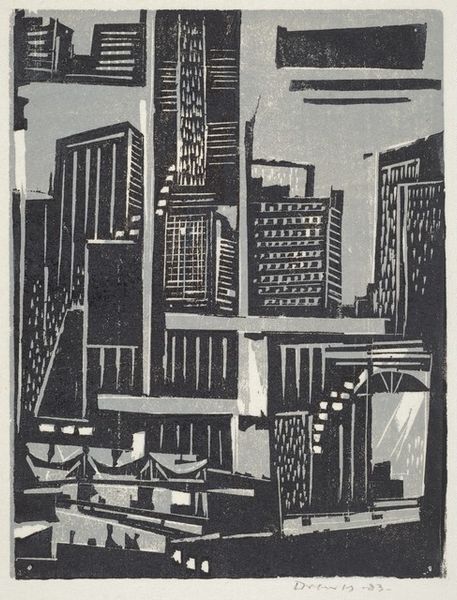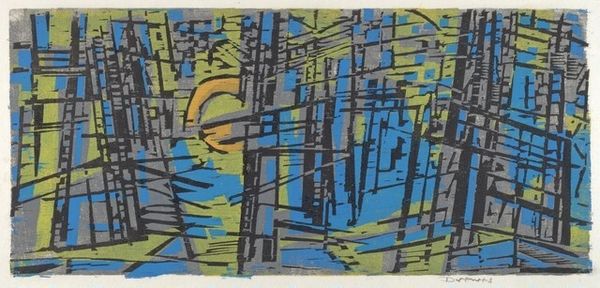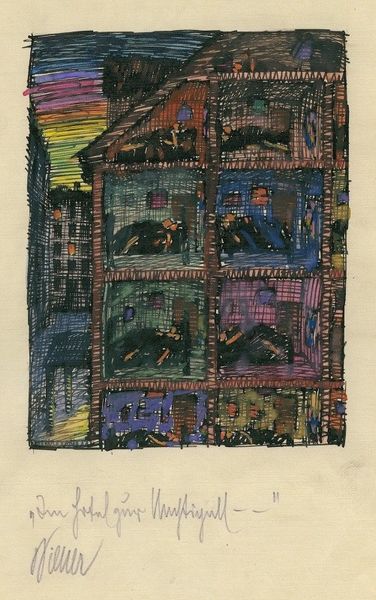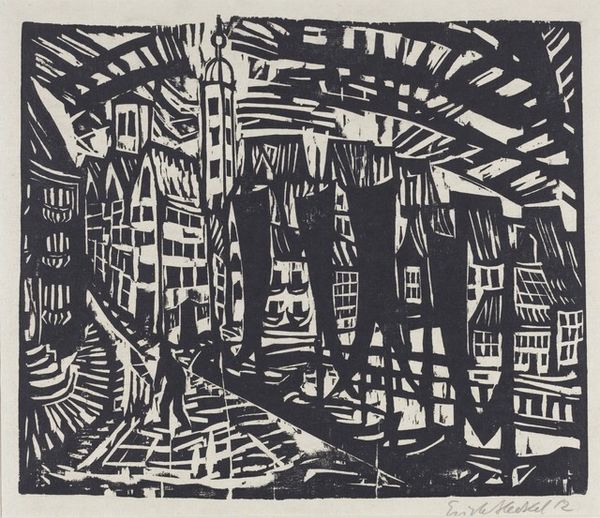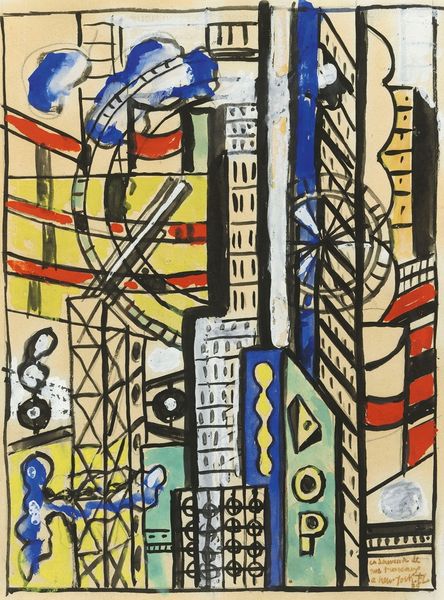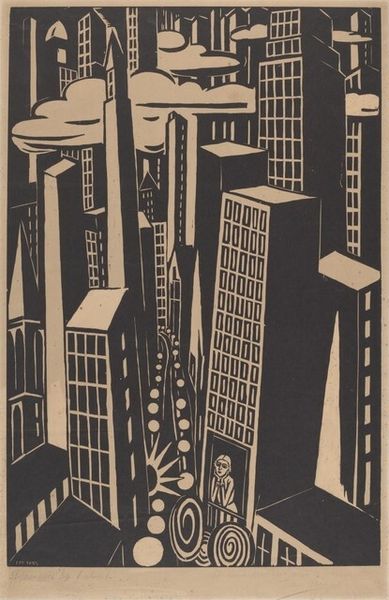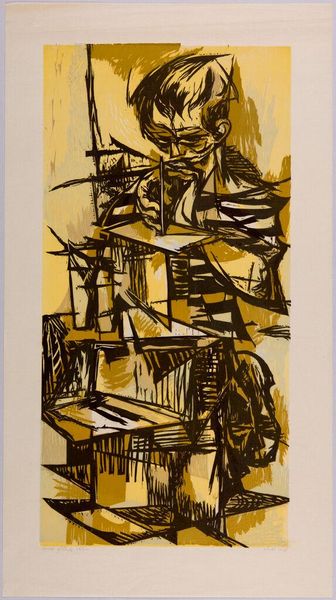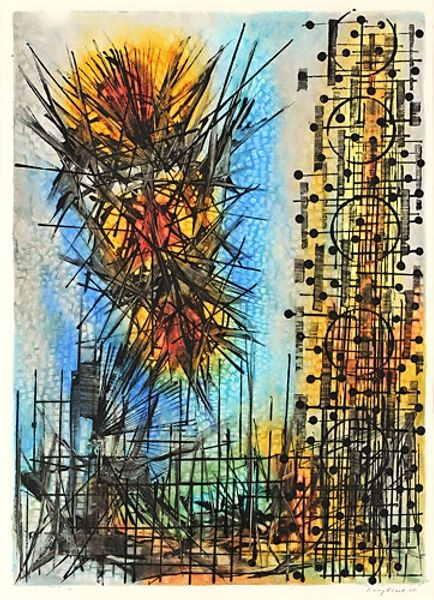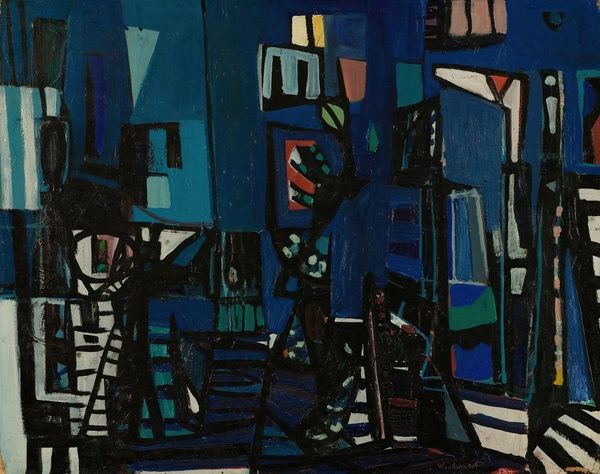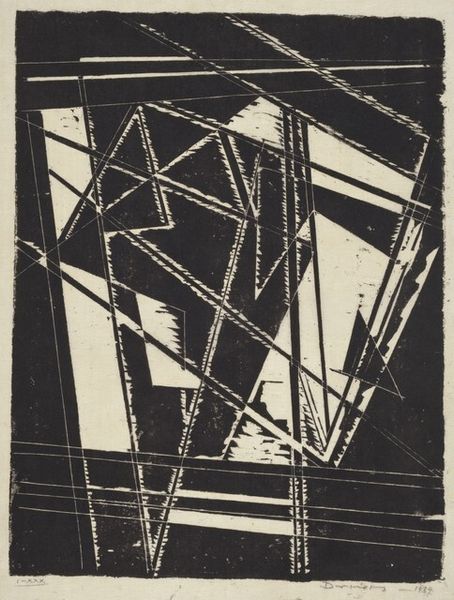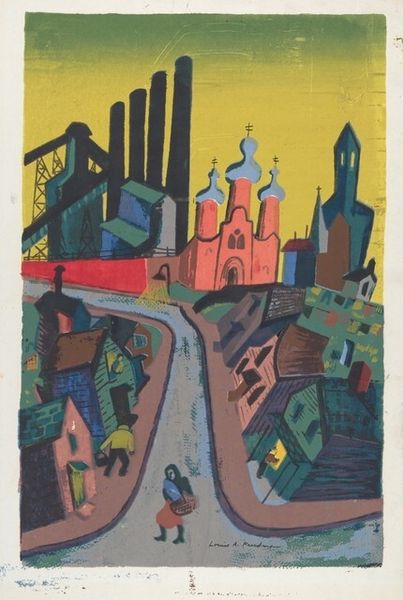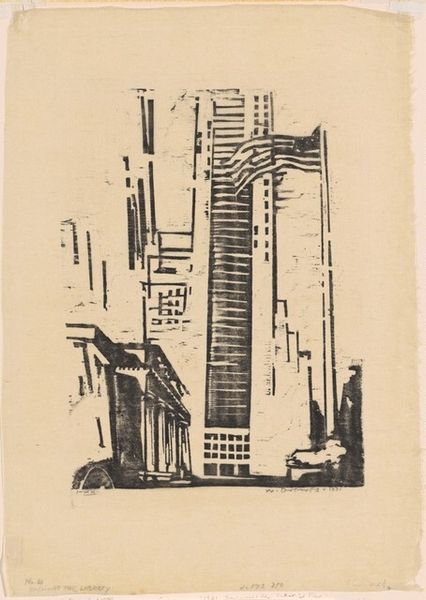
print, woodcut
# print
#
new-york-school
#
woodcut
#
naive art
#
cityscape
#
modernism
Copyright: National Gallery of Art: CC0 1.0
Editor: Right, so this woodcut print is called *Manhattan*, created in 1955 by Werner Drewes. It's definitely an abstract cityscape. It strikes me as both chaotic and ordered, with these dark, blocky structures fighting for space on the page. What do you see in this piece? Curator: Well, immediately I think about the post-war cultural landscape and the rise of New York as a global art capital. This print, made with the very traditional medium of woodcut, is aligned with the New York School's ethos, although Drewes uses abstraction rather than expressionism to depict the quintessence of urban modernity. Consider how museums and galleries were actively promoting American art, almost as a form of cultural diplomacy. Do you think this print reflects a sense of optimism, or perhaps anxiety, about the rapidly changing urban environment? Editor: That’s a really interesting point about cultural diplomacy. I initially saw the darker colours as ominous, but maybe the overall composition points to optimism, suggesting dynamic growth despite potential social unease. Are there specific visual elements that highlight this duality? Curator: Look at the bridge. It's not just a structure; it's a symbol of connection and progress, literally bridging different parts of the city and suggesting a movement towards the future. Yet the fractured, almost Cubist representation of the buildings shows a potential break from traditional perspectives. Considering the broader historical context, with the Cold War and looming anxieties, how does that play into Drewes' interpretation of Manhattan? Editor: So, even with its modern aesthetic and bold lines, the woodcut carries a weight of historical and social commentary on New York City, that otherwise could be easily missed. That tension between progress and underlying uncertainty is very compelling to discover here! Curator: Exactly! The apparent simplicity of the "naive art," hides so much social commentary. Thinking about the relationship between art and its sociopolitical climate definitely brings the piece to life.
Comments
No comments
Be the first to comment and join the conversation on the ultimate creative platform.
